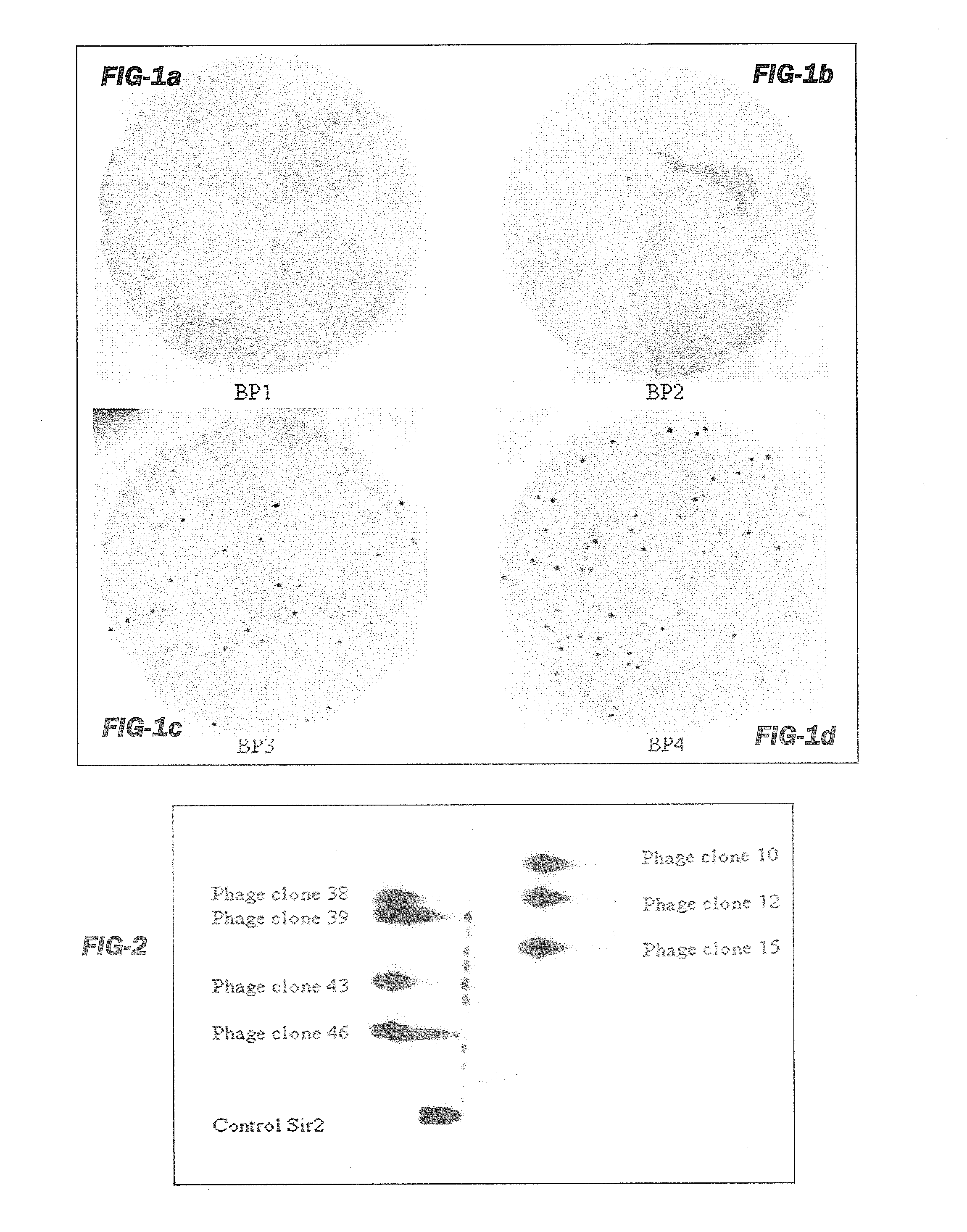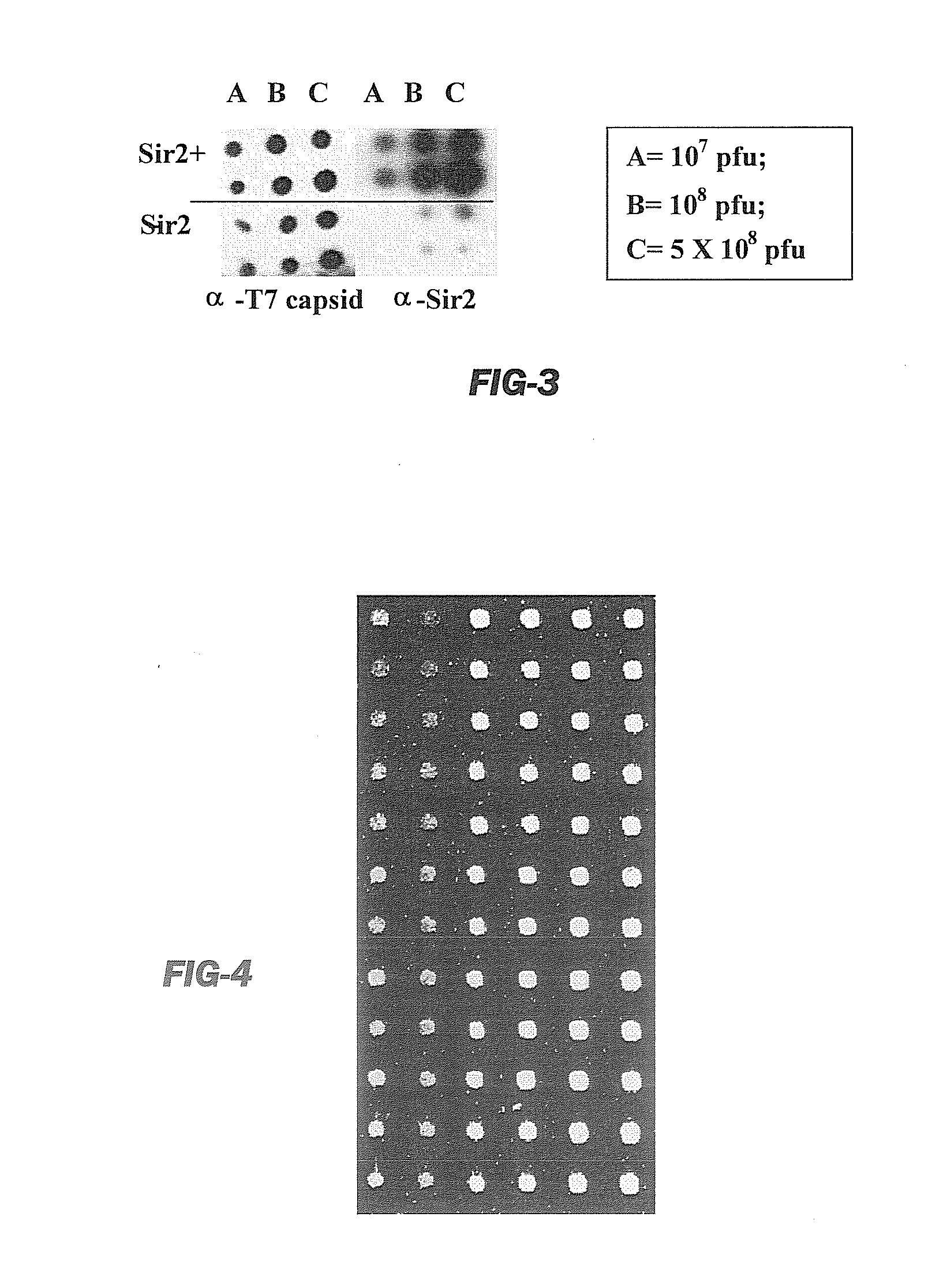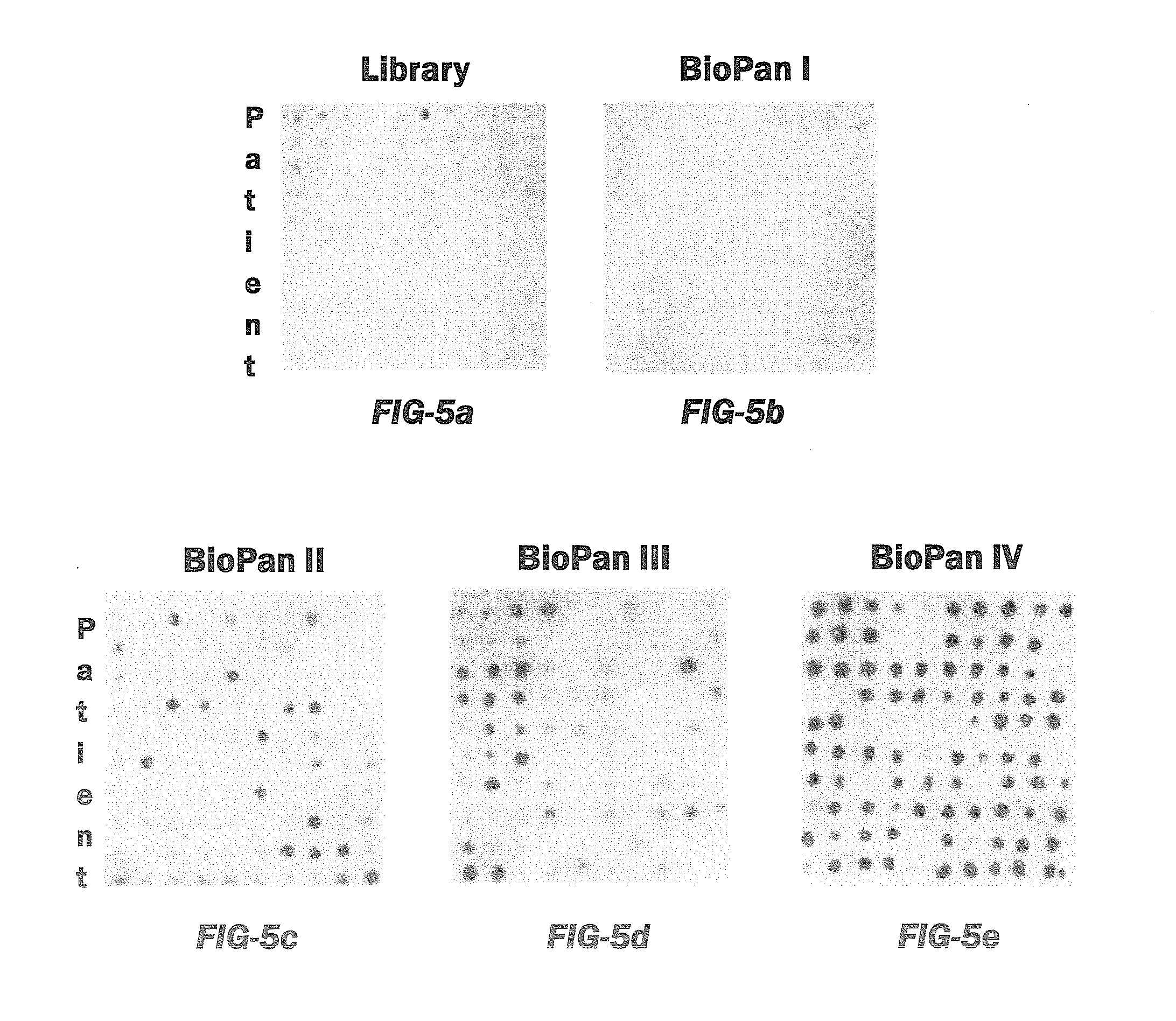Neoepitope detection of disease using protein arrays
a protein array and disease technology, applied in the field of immunoassays for cancer diagnosis, can solve the problems of limited therapeutic options and survival rates, malignant and benign breast disease, and few advancements which can repeatably be used in diagnosing cancer, so as to reduce morbidity and cost, and the effect of high sensitive natur
- Summary
- Abstract
- Description
- Claims
- Application Information
AI Technical Summary
Benefits of technology
Problems solved by technology
Method used
Image
Examples
example 1
[0114]The purpose of this study is to clone epitopes that are recognized by sera from women with ovarian cancer but not recognized by normal sera from unaffected women. As these epitopes are cloned, protein array assays are developed capable of detecting ovarian cancer at an early stage by analyzing antigens recognized in the sera of at risk women. Toward this end, individual sera were screened using these protein biochips to determine the antibody reactivity to each protein epitope. Antibody reactivity is detected that does not appear in control sera. The patients and control sera obtained for this study were used to calibrate the protein biochips and identify the most informative epitope-clones. The women were monitored for the appearance or reappearance of antibody reactivity and its correlation with tumor burden. By following the serum reactivity to tumor reactive new epitopes on the arrays of the phage display cDNA clones, the analysis of sera from women after their initial dia...
example 2
[0189]A strategy was developed for serological detection of large numbers of antigens indicative of the presence of cancer, thereby using the humoral immune system as a biosensor. The high-throughput selection strategy involved biopanning of an ovarian cancer phage display library using serum immunoglobulins from an ovarian cancer patient as bait. Protein macroarrays containing 480 of these selected antigen clones revealed 44 clones that interacted with immunoglobulins in sera from all (32 / 32) ovarian cancer patients, but not with sera from either healthy women (0 / 25) or patients having other benign or malignant gynecological diseases (0 / 14). An informative subset of 26 antigen clones was chosen based on the criterion that the serum from each of a group of 16 patients interacted with at least one of the clones. When another, independent group of 16 serum samples was used, all 16 samples interacted with one or more of the 26 clones, and none from 12 healthy women. The process of glob...
example 3
[0233]The 480 clones described in Example 2 were screened against new independent samples of ovarian cancer patient and control sera, using the methods of Example 2. This procedure revealed 166 new clones of interest that discriminated cancer from non-cancer with 93% accuracy. Upon DNA sequencing it was found that there were 77 additional new antigens cloned. These antigens, listed in Table 6A, are epitopes including SEQ ID NOs: 90, 106, 135, 136, 145, and 150, and mimotopes including SEQ ID NOs: 76-89, 91-105, 107-144, 146-149, 151, and 152.
PUM
| Property | Measurement | Unit |
|---|---|---|
| diameter | aaaaa | aaaaa |
| time | aaaaa | aaaaa |
| diameter | aaaaa | aaaaa |
Abstract
Description
Claims
Application Information
 Login to View More
Login to View More - R&D
- Intellectual Property
- Life Sciences
- Materials
- Tech Scout
- Unparalleled Data Quality
- Higher Quality Content
- 60% Fewer Hallucinations
Browse by: Latest US Patents, China's latest patents, Technical Efficacy Thesaurus, Application Domain, Technology Topic, Popular Technical Reports.
© 2025 PatSnap. All rights reserved.Legal|Privacy policy|Modern Slavery Act Transparency Statement|Sitemap|About US| Contact US: help@patsnap.com



